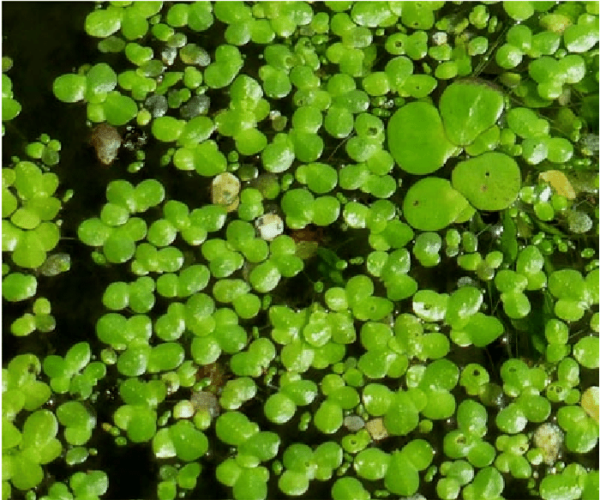author(s) : Howaida I. Abd-Alla and Abdel-Fattah M. Rizk
description
Duckweeds (Lemnaceae), monocotyledonous aquatic plants, are represented by 37 species. The 37 species are categorized into five well-defined genera: Spirodela (2 species), Landoltia (1), Lemna (13), Wolffiella (10) and Wolffia (11). These aquatic angiosperms are cosmopolitan in distribution except for some endemic species (Sree et al., 2016).
Duckweed (Landoltia punctata) is the smallest and simplest flowering aquatic plant in the world, and its growth highly adaptable across a broad range of climates (Tao et al., 2017).
Duckweeds grow very fast and proliferate quickly by budding, allowing them to colonize freshwater habitats rapidly and produce 13 to 38 metric tons / hectare/year dry weight of plant mass. Since duckweeds can absorb pollutants (e.g., N, P and heavy metals) from wastewater, they have been commonly used in the treatment of domestic and animal wastewater streams for many years (Wang et al., 2014a).
Meanwhile, because of the relatively high starch and low lignin content in this plant, it has been proved to be an ideal bioresource for bioethanol production (Cheng and Stomp, 2009; Xu et al., 2012).
Duckweeds can be utilized to produce ethanol, butanol and biogas (Cui and Cheng, 2015). Duckweeds, especially species belonging to Wolffia (Araceae), have been traditionally eaten in some parts of the world as a component of the nutritious human diet.
Duckweeds are eaten as salad, mixed in soups or curries or in omelettes (Appenroth et al., 2017). In many parts of the world, duckweeds are consumed by domestic and wild fowl, fish, herbivorous animals, and humans (Rusoff et al., 1980).
Genera Count
represented in egypt with 3 Genera
Species
represented in egypt with Species
Nutrients: The nutritional value (protein, fat, minerals and starch contents as well as amino acid and fatty acid distribution) (Tables 1-4) of six species encompassing all five duckweed genera were studied: Spirodela polyrhiza 7498 (USA, NC), Landoltia punctata 9589 (India, Delhi), Lemna minor 9441 (Germany, Marburg), Lemna gibba 7742 (Italy, Sicilia), Wolffiella hyalina 9525 (India, Telangana), and Wolffia microscopica 2005 (India, Gujarat). Protein content spanned from 20% to 35%, fat from 4% to 7%, and starch from 4% to 10% per dry weight. Interestingly, the amino acid distributions are close to the WHO recommendations, having e.g. 4.8% lysine, 2.7% methionine + cystine, and 7.7% phenylanine + tyrosine. The content of polyunsaturated fatty acids was between 48 and 71% and the high content of n3 fatty acids resulted in a favourable n6/n3 ratio of 0.5 or less. The starch content in the six investigated duckweed species was between 4% (Lemna minor) and 10% (Landoltia punctata). The phytosterol content in the fastest growing angiosperm, Wolffia microscopica, was 50 mg g-1 lipid. Wolffiella hyalina and Wolffia microscopica were recommended for human nutrition (Appenroth et al., 2017)…
Representatives of the family Lemnaceae are widely used in folk medicine in Russia, China and some European countries. Herb powders of Lemna minor, Lemna trisulca L., Spirodela polyrrhiza (L.) Schleid. have antipyretic, diuretic, analgesic, emollient, styptic, tonic, cooling, choleretic, antiscorbutic, anthelmintic, anti-inflammation and antimicrobial actions.
- Wolffiella
- Lemna
- Spirodela
location

egypt

